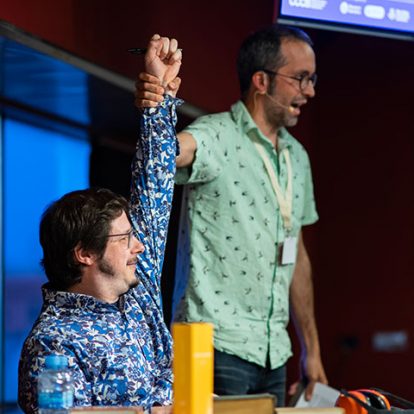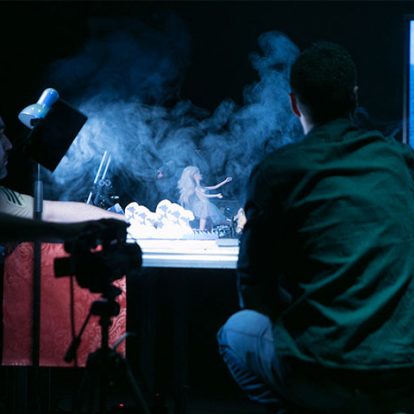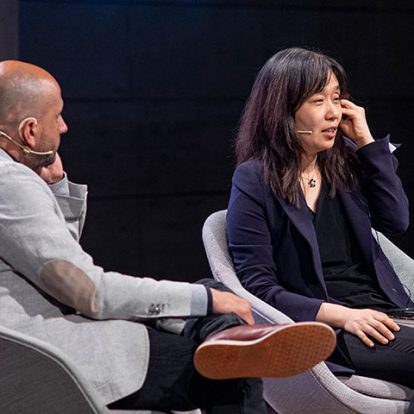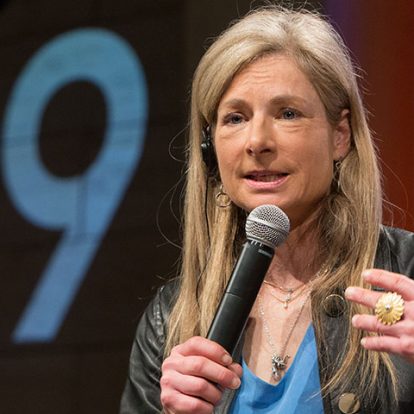Seven Gems to Discover at K19
Eva Rexach
06 March 2019
We propose a little journey into the future to take a glimpse of the upcoming Kosmopolis 2019. You’ll see a selection of what promise to be the main highlights of the festival, with events of all types: talks, films, concerts, performances, theatre… We want to start by giving you a small taste of things to come. The rest will be all yours to discover.
I remember it as if it were today. The voice of Ursula K. Le Guin rang out clearly through the CCCB theatre. She was telling us where her stories came from, talking about her fantastical worlds, about her alien beings, while Michael Chabon, Neil Gaiman and Margaret Atwood recalled the passages from her books that had made the greatest impression on them. The screening of Worlds of Ursula K. Le Guin, the beautiful documentary by Arwen Curry, was one of the most powerful moments of K19. Ian Watson, who was a personal acquaintance of the author, did the honours, reminding us of how ahead of her time K. Le Guin was. Not only because her stories talked about the future, but because her personal philosophy, her feminism and her criticism of totalitarianism were revolutionary.
I was really impressed by the film, especially the way it related to what I’d heard that morning. I’d been to the talk by Nick Srnicek and Helen Hester, representative of the collective Laboria Cuboniks, which penned the Xenofeminism Manifesto. How timely it was to hear someone talking about a rationalist, antinaturalist and gender-abolitionist feminism that embraces technology, after having listened to Ursula K. Le Guin. The transfeminists of 2015, the year in which the manifesto was published, had so much in common with the characters of her fantasy novels! “Xenofeminism is gender-abolitionist”, says the manifesto. “‘Gender abolitionism’ is shorthand for the ambition to construct a society where traits currently assembled under the rubric of gender, no longer furnish a grid for the asymmetric operation of power.” In a way, this is what happened with the beings that inhabited the novel The Left Hand of Darkness, who acquired male or female gender and could behave interchangeably as men or women And this abolition of gender will go even further until it revolutionises the concept of work, as Hester discussed in detail with Srnicek, who also offered some reflections on contemporary Marxism.
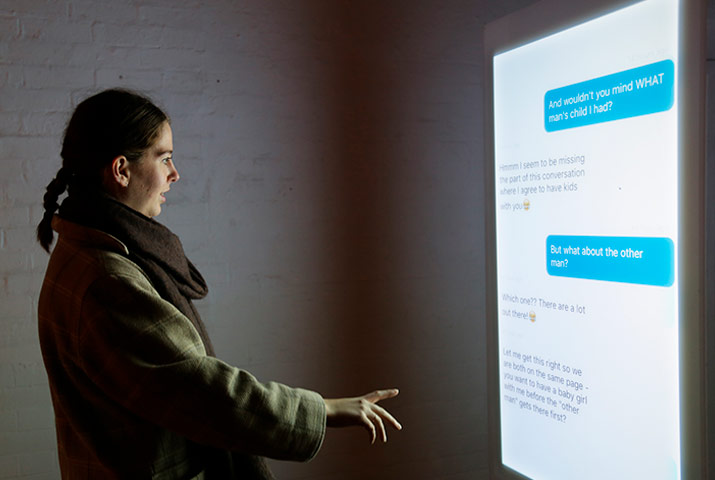
The robot who chatted with users in Libby Heaney’s Tinderbot could also have been either a man or a woman. I discovered it in the Stories Lab, where I got a chance to witness this experiment that blended together literature and technology. Libby Heaney, a quantum physicist and artist, scanned Lady Chatterley’s Lover and built a bot that replied to Tinder users with phrases by Constance Chatterley. Bearing in mind that when D.H. Lawrence’s book was published in 1928, Constance was already a modern woman, I wasn’t surprised that the men who tried to have a conversation with the robot had no idea what was going on. Some of them caught on and sent a riposte with other phrases from Oliver Mellors, the lover, or Clifford, the crippled husband – but it wasn’t clear whether they knew they were conversing with a robot. Perhaps this was also the point of the experiment…
As I recall, after this experience I decided to wander into Kubrick’s world. Or rather, into the world of The Shining. I’d just read the novel by Stephen King and it was a good moment to watch the film again with the guidance of its keenest analyst. Simon Roy became obsessed with the film the first time he saw it when he was six years old, because it reflected a spectre that had haunted three generations of his family. This is what led him to write Kubrick Red: A Memoir, as a way of “psychoanalysing” himself. His book on violence, the nature of evil and madness offers an example of the power art has to help us understand and elucidate ourselves. Roy took part in K19 on two fronts: firstly, he gave a talk about his obsession with The Shining; and secondly, he spoke to Rodrigo Fresán and Laura Fernández about Kubrick’s films, his genius and the stories that inspired him. An entertaining chat that took in both film and literature. Just what I needed.
I remember that I also saw two really quite strange performances; two of those once-in-a-lifetime moments. On Saturday evening, there was Blixa Bargeld, who gave a powerful performance that blended drama, poetry recital and music. The founder of the industrial and Dadaist rock group Einstürzende Neubauten, whose music is played on instruments made by the musicians themselves, Bargeld made the most of his visit to Barcelona to present his book Europa, una letanía (Europe Crosswise. A litany) and treat us to a solo vocal performance.
A couple of evenings before this, there was a performance that fused theatre and experimental reading. In 2011, Lluís Marco, Rosa Renom and Pere Arquillué appeared in Copenhagen, a play by Michael Frayn that recounts the meeting between Niels Bohr and Werner Heisenberg that brought to a halt the creation of the atomic bomb by the Nazi regime. At K19, these same actors recited scenes from the play to a backdrop of images of the original performance, to create a strange interplay between an acted past and a recited present.
The climax came in the form of neo-flamenco by Maria José Llergo, whose career is just taking off as she becomes one of the new stars of contemporary Mediterranean singing. Her concert imbued the tenth Kosmopolis festival with a special magic and gave us a taste of things to come two months later at Primavera Sound.
I saw other things in K19: I listened to literary dialogues, I had a go at virtual reality games, I went to a Poetry Slam session, I saw films and series… But these were my seven highlights of K19 – the sessions that I would later look back on with the greatest pride. Because now I can say: I was there, I saw it at K19 before anyone else was talking about it.

